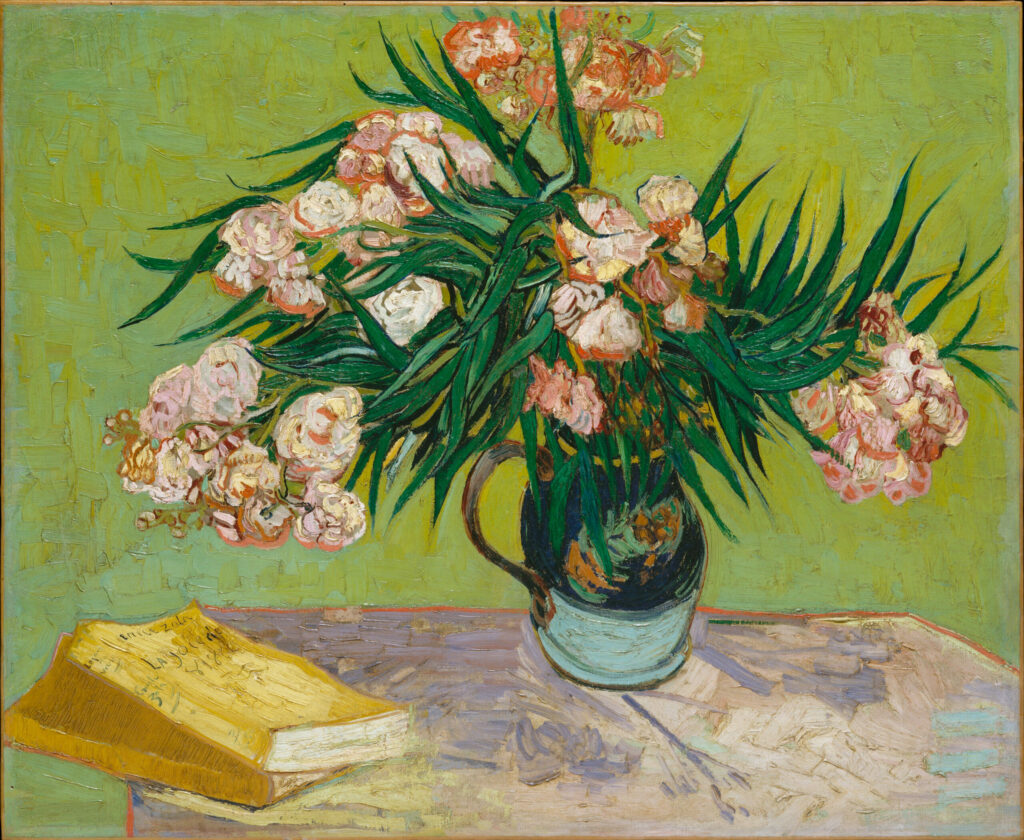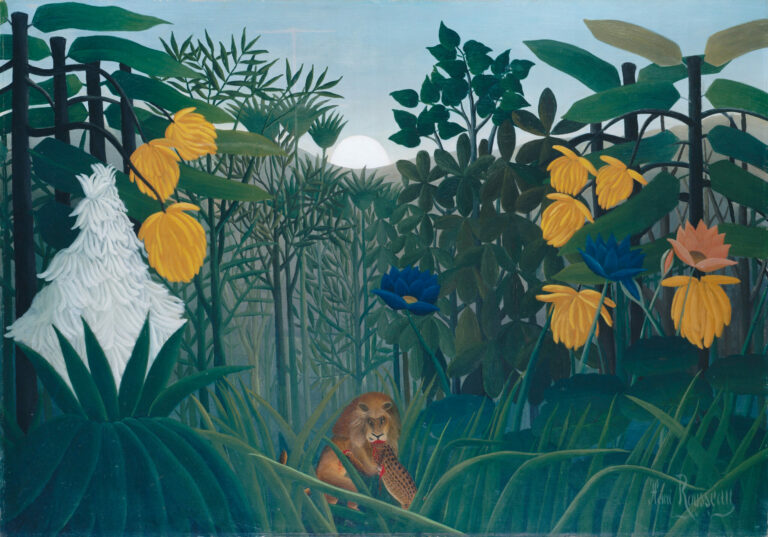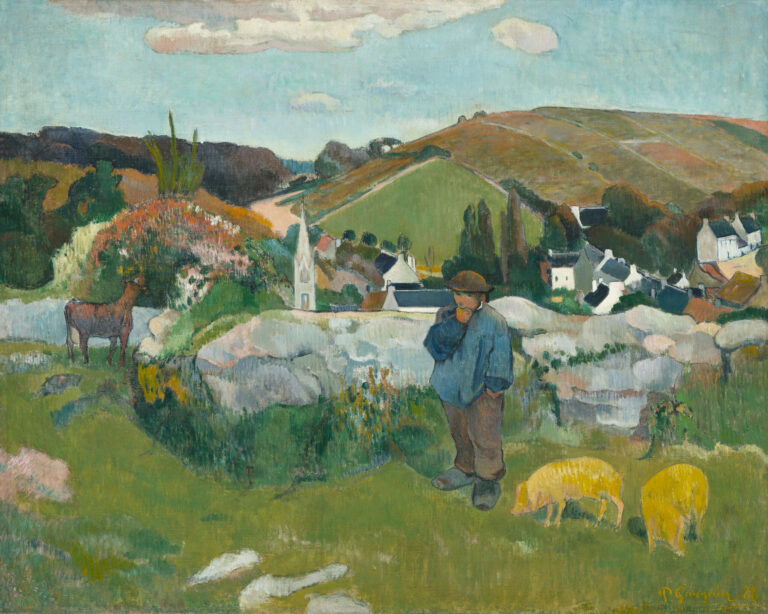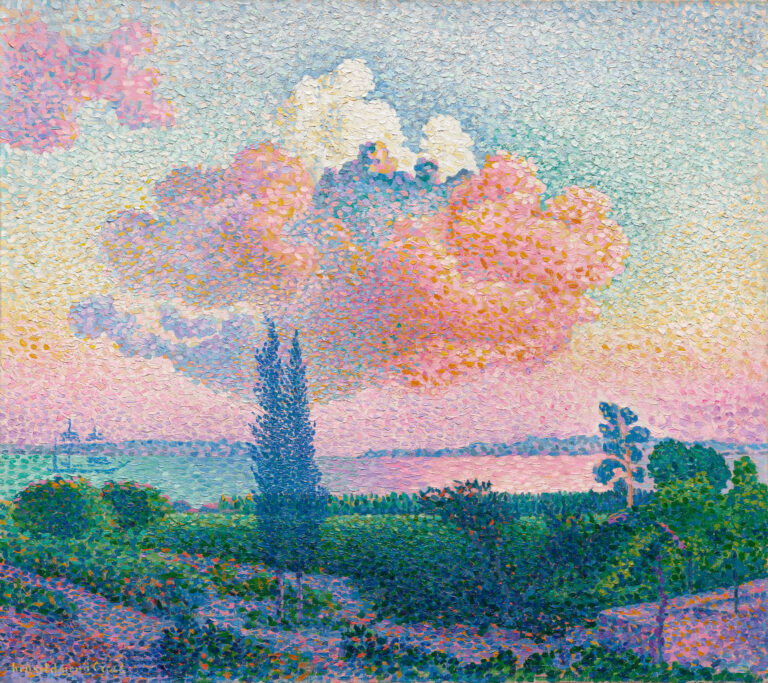
Oleanders reveals the accomplished art of Vincent van Gogh during his Arles period in August 1888, a moment of creative flourishing under the Provençal sun.
This radiant still life captures the vital essence of these flowers that the artist admired for their “inexhaustible” blooming and their “vigorous new shoots.” The oleanders, in delicate shades of white and coral pink, burst forth from a majolica pitcher that he particularly favored, reused in several Arles compositions. Van Gogh masterfully orchestrates chromatic contrasts: the acid green of the background dialogues with the powdery tones of the flowers, while the violet table firmly anchors the composition. The symbolic presence of Émile Zola’s novel “The Joy of Living” is not coincidental—the artist had already juxtaposed this modern literary work with a Bible in a still life from Nuenen in 1885. This juxtaposition reveals Van Gogh’s philosophical preoccupations, confronting religious tradition with secular humanism, death with rebirth, in a pictorial hymn to creative vitality.
Further information
- Oleanders, by Vincent van Gogh, 1888
- 60.3 x 73.7 cm (23 3/4 x 29 in.), oil on canvas
- The Metropolitan Museum of Art, Fifth Avenue, New York, displayed in Gallery 825
- https://www.metmuseum.org/art/collection/search/436530
Vincent van Gogh (1853-1890), misunderstood genius of Post-Impressionism, revolutionized modern art through his pictorial language of unequaled emotional intensity. A passionate autodidact trained through direct observation and study of the masters, he developed a singular technique with expressive impasto and pure colors. His Arles period (1888-1889) marks the apex of his art, where Mediterranean light and creative exaltation gave birth to his most celebrated masterpieces. Misunderstood during his lifetime, Van Gogh profoundly influenced 20th-century art through his visionary modernity and pioneering expressionism.






